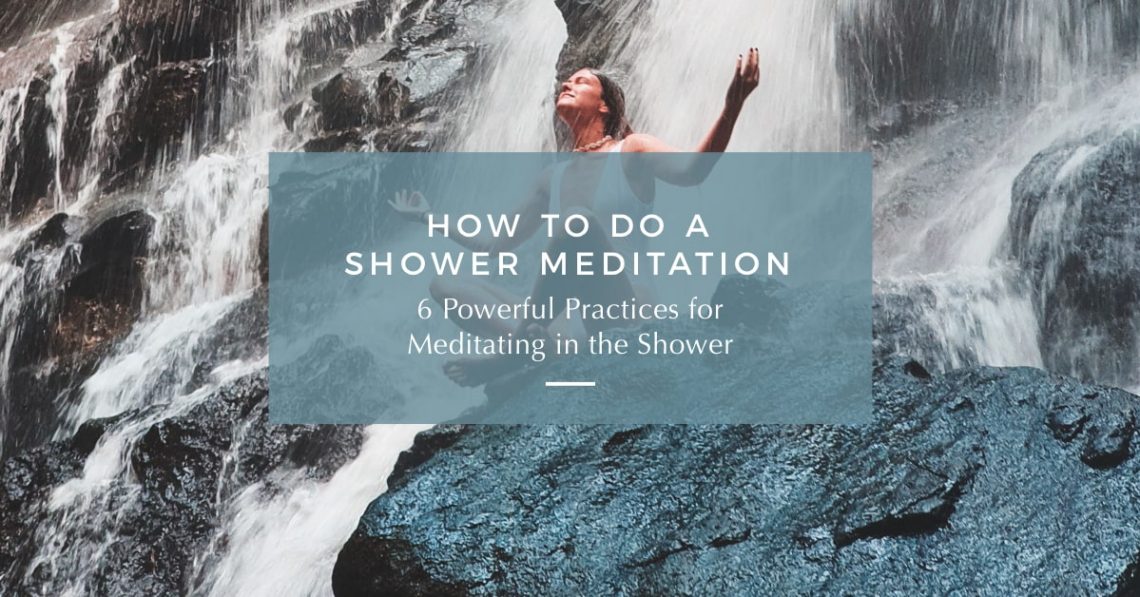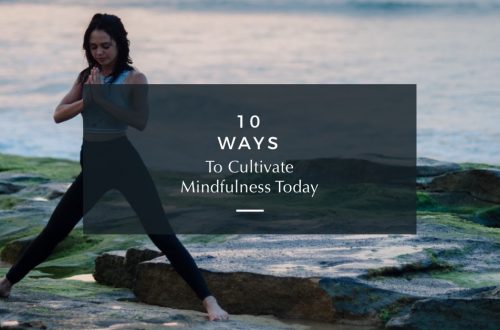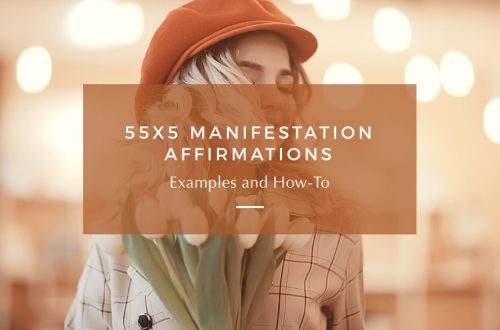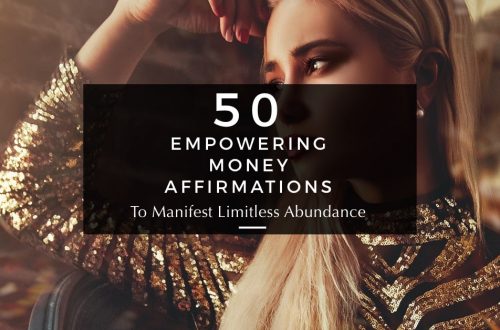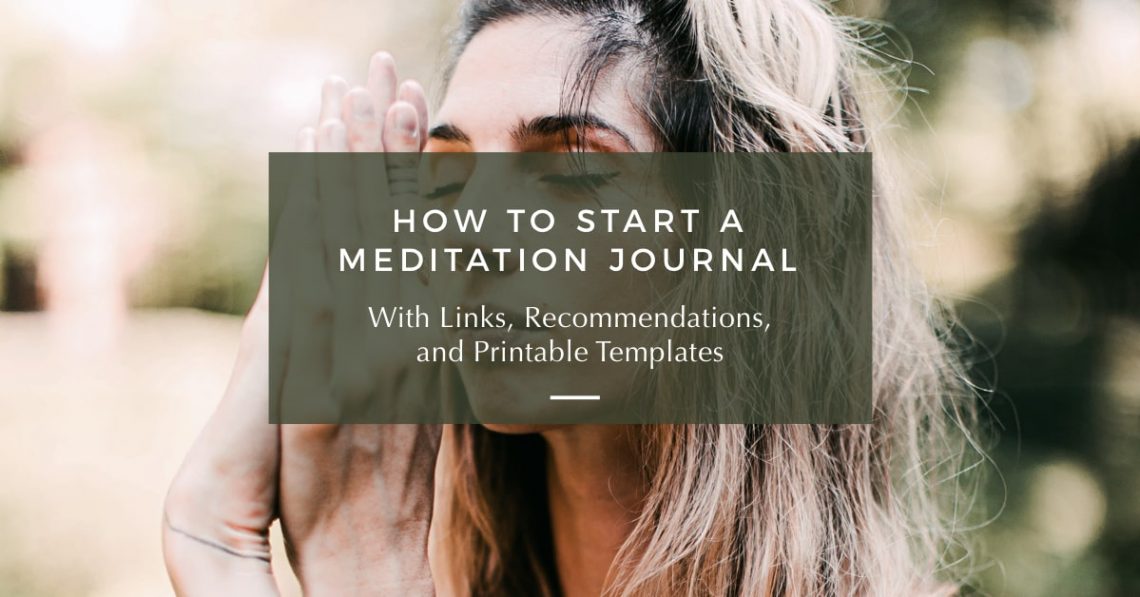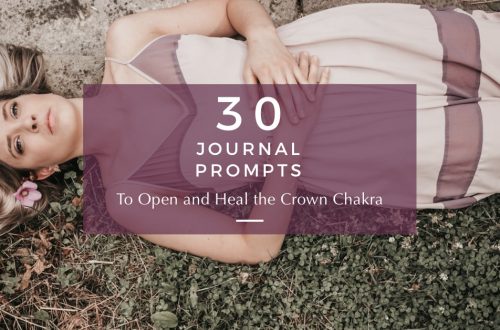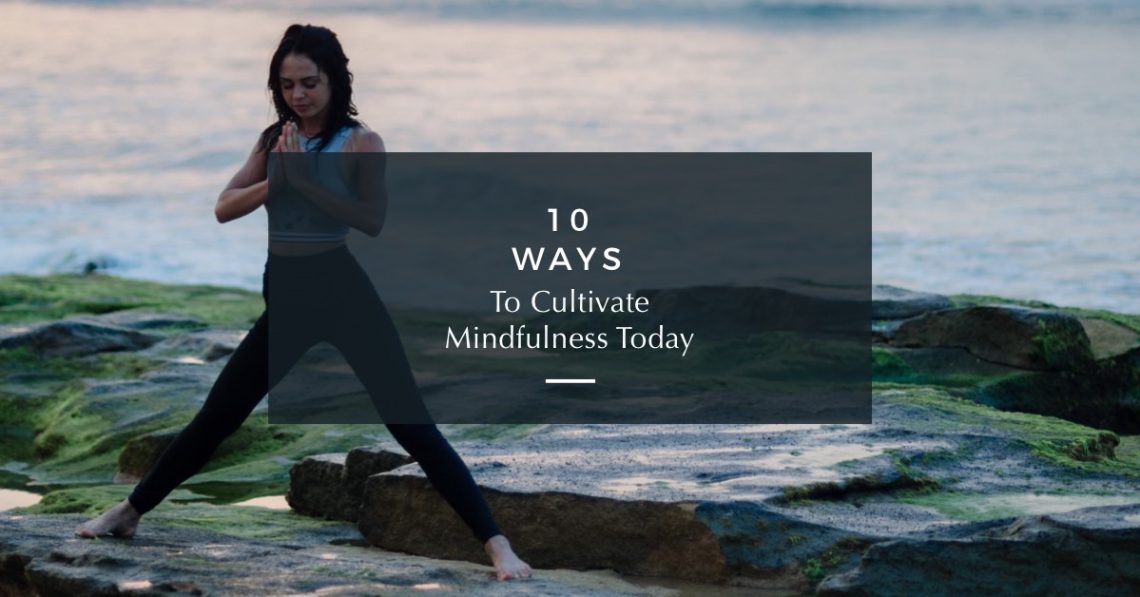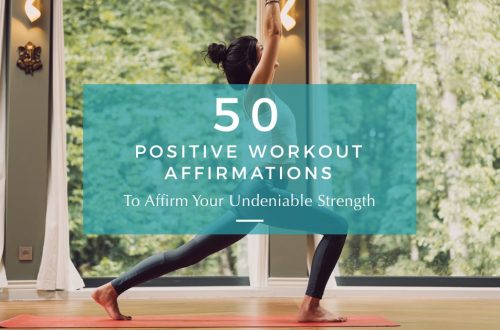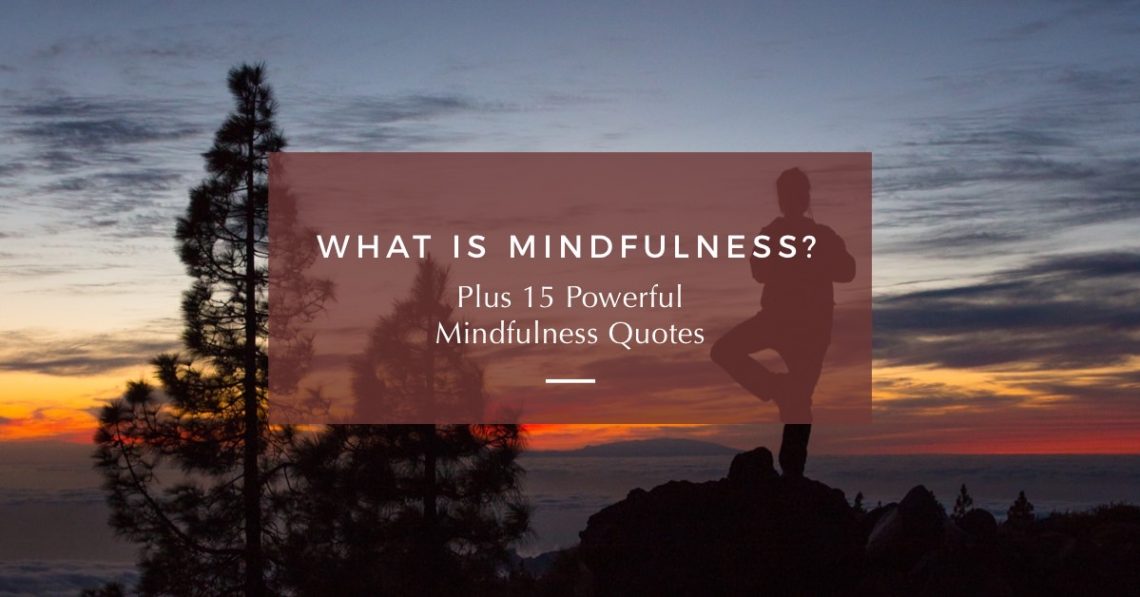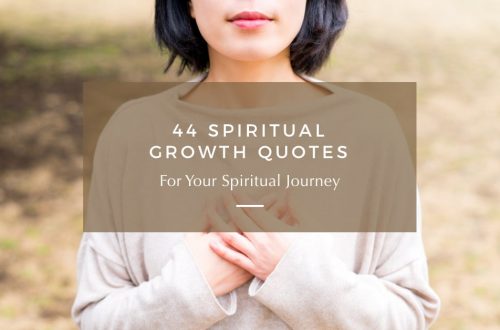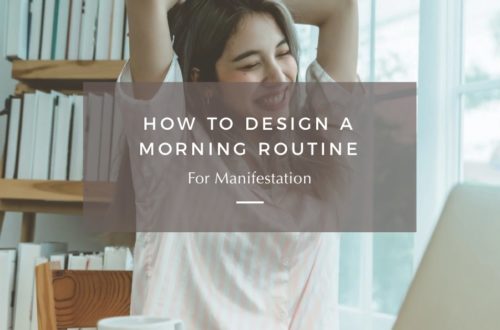-
Shower Meditation: 6 Ways to Meditate in the Shower
Can you really meditate in the shower? It may seem weird at first, but shower meditations have become one of my favorite practices for cultivating mindfulness, connecting with my inner self, and instilling peace and tranquility within. Discover 6 powerful practices you can start using today for an effective shower meditation!
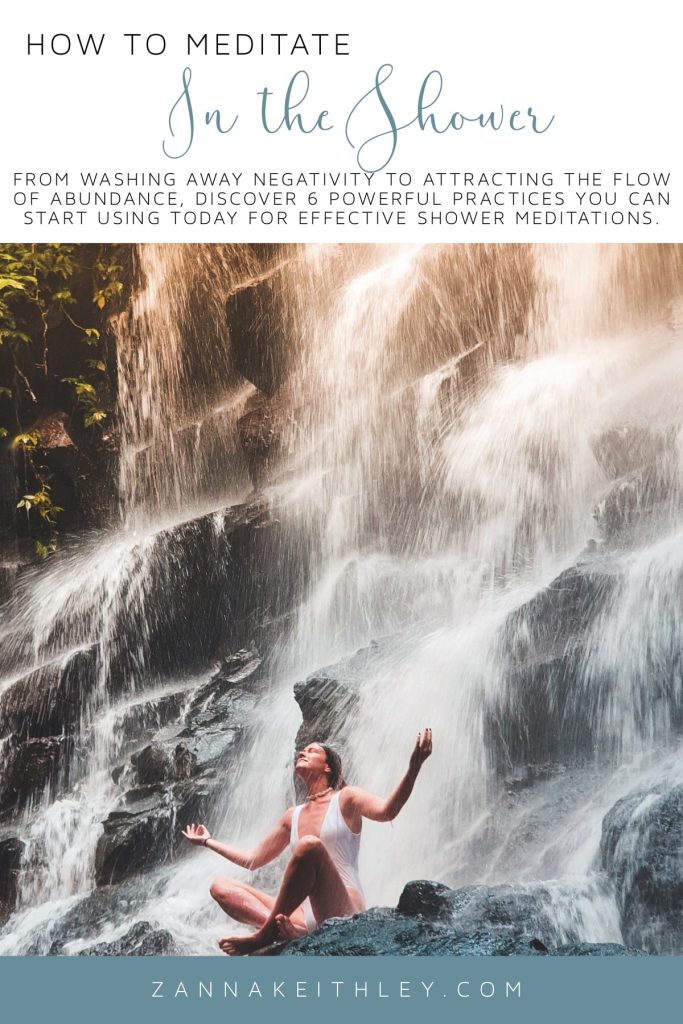
Pin this! How to Do a Shower Meditation (6 Powerful Practices) Debunking Meditation Myths
What do you think of when you hear the word meditation?
Here are some of the thoughts I once had, before I started meditating:
- Meditation is for monks and really special people who have the elusive power of being able to completely clear their head of thoughts.
- Meditation requires perfect silence and stillness.
- Meditation is hard.
- Meditating requires you to not have any thoughts at all.
- Meditation takes hours every day.
I’m sure there were other limiting beliefs swirling around in my head, preventing me from even entertaining the notion of trying to meditate. The biggest limiting belief? “I can’t do it. It’s too hard. Meditation just isn’t for me.”
Depending on where you are in your meditation journey, you may also have experienced similar thoughts and beliefs, or you might still hold some of these beliefs with you now. And that’s okay. One of the greatest benefits of meditation is the ability to cultivate mindfulness: non-judgmental awareness in the present moment.
That means noticing any negative thoughts or limiting beliefs you have without placing labels on them as good or bad.
You might already sense where this is headed here. Eventually, external influences came into my life that re-framed my perspective on meditation. So finally, I decided to give it a shot. And with time and consistency, I learned that all the beliefs I had about meditation were wrong.
Meditation isn’t for only really special people. It doesn’t require perfect silence or stillness. You don’t have to clear your head of all thoughts. And it doesn’t take hours.
And to turn that on its head:
Meditation is for everyone. You can meditate when it’s noisy. You can meditate while you’re moving. You can have thoughts the entire time you’re meditating. And you can meditate in five minutes. Or three minutes. Or one minute. In fact, time doesn’t matter at all.
Can You Really Meditate in the Shower?
When I first started shower meditations, I didn’t actually call them meditations at all. I wasn’t purposely trying to label what I was doing. I just wanted to relieve my mind from persistent worrying thoughts.
The shower is an interesting place. In Untamed, Glennon Doyle writes about how her kids describe the shower as this magical portal to brilliant ideas that just come to them effortlessly. I remember reading this part and thinking, “Yep! I know exactly what they’re talking about!”
I’ve had some of my most brilliant and creative ideas in the shower. (Well, in my head, they’re brilliant . . .) Sometimes, I’ve had several different ideas come to me at once, tumbling through my head like dominoes.
I’ve also spent entire shower sessions lost in worries and anxiety, so engrossed in my own thoughts that by the end of the shower, I don’t even remember washing my hair. (A smell test confirms I did.)
As I began to cultivate more mindfulness in my life, I started to pay closer attention to the paths my mind would wander in the shower. I have a lot of negative thoughts in here, I realized.
But what if it didn’t have to be that way?
What if I could change my story and use the shower as a place to wash away those negative thoughts and realign with my highest, truest self?
So I decided to take back my story and change the way I approached showering. I started to be intentional with my thoughts. And because I tend to shower in the morning, this proved to be an effective way to start my day on a positive note.
Below, I list several different methods you can use for a powerful and effective shower meditation. I’ve used all of these practices, and I can attest that they don’t just change the way I approach showering; they positively affect my thoughts, emotions, and overall mood for the entire day.
And to answer the question I posed in the heading: yes, you can absolutely meditate in the shower. One of the myths people often hold about meditation is that it requires sitting still cross-legged on the floor. And while I do meditate like this every morning, I’ve also done walking meditations, laying down meditations, and even quick breathing meditations when I get anxiety at the grocery store.
You can meditate anywhere it feels right to you. And the shower is a perfect place to start.
Shower Meditation #1: Wash Away Negativity
Where do your thoughts go when you’re in the shower? Do you worry about the day ahead? Do you replay events of the past 24 hours? Do you create imaginary worst-case-scenarios in your mind of things that probably will never happen?
Notice where you feel tension in your body. Notice what you’re currently worried or stressed about. Simply notice anything going on internally that doesn’t serve your highest good.
Now close your eyes. Take a deep, soulful inhale and a rejuvenating exhale. Concentrate on how the water feels on your skin. As the water falls around you, imagine it washing away any negative thoughts and emotions you’re holding onto. The water takes your tension and carries it to the drain. Anything that doesn’t serve your highest good is washed away from your body.
Feel your body becoming lighter. Your mind is clear. Your heart is open. Anything that doesn’t serve or support your total well-being has been washed away, swirling down the drain, where it will be cleansed by the earth.
When you’re done, smile and express gratitude. Feel the strength of your body, mind, and spirit.
You are worthy, powerful, whole, and more than enough. Carry those feelings with you throughout your day.
Shower Meditation #2: The Flow of Abundance
This is similar to the practice above, but instead of imagining the water washing something away from you, you visualize the water carrying something to you.
Close your eyes and take a deep breath. What are you seeking in your life today? Whatever you’re seeking, you are going to attract an abundance of it to you.
If you’re seeking creative ideas, imagine an abundance of inspired ideas and creative thinking washing down on you.
If you’re seeking financial prosperity, visualize gold coins and beautiful jewels raining down all around you.
If you seek peace, envision the water carrying infinite peace throughout your entire being.
Whatever it is that you seek, know that it is always available to you. And because all that you seek is already within you, you’re literally creating everything you desire within and attracting it to your being.
I like to think of the water as a metaphor for your limitless capacity to create and have anything you want. The water is constantly flowing, and because you know more is coming, you don’t have to cling to every droplet that falls down on you. You can appreciate when it comes, let it go, and find gratitude knowing that more is on its way.
The same is true for abundance. You have access to an infinite flow of abundance. It is your birthright, and it will never be taken away from you. So instead of clinging onto the inspired ideas, financial prosperity, peace, and anything else you desire, you can simply let it go, knowing more is on its way.
Shower Meditation #3: Positive Affirmations
A positive affirmation is a present-tense statement that is designed to uplift and encourage while boosting self-belief and supporting your overall wellbeing.
One of my favorite ways to lift my vibrations, take back my story, and release anything that doesn’t support my highest good is through positive affirmations.
I use positive affirmations when I’m driving, working out, at the grocery store, and throughout the day to affirm my worthiness and remind myself of my inherent limitlessness.
So I guess it’s no surprise that I started using positive affirmations in the shower, too.
To start, come up with a list of positive affirmations that resonate with you. If you need help getting started, here’s a list of positive affirmations for success, one for self-confidence, spiritual affirmations, and affirmations to end your day. If you’re well-versed with using affirmations and would rather come up with some on the spot, that’s okay, too!
If you want, you could try printing your affirmations and laminating them so you can hang them up in front of you to see. I haven’t tried this, but I imagine with a little ingenuity, you could get it to work.
As you shower, take conscious inhales and exhales. I like to spend a minute or two envisioning the water washing away and carrying any negativity from my body. Now, you can start saying your positive affirmations, either internally or aloud. Continue to repeat as you go about your normal showering tasks.
If you want to take it a step further, I like to close my eyes for a minute while I’m doing this. I’ve noticed that when I close my eyes in the shower, I don’t see pure darkness; instead, I see a faint golden hue shining behind my eyelids. you may notice this, too. Breathe into this light as you say your affirmations: I am worthy. I am enough. I am strong. I am powerful. I am loved. Envision the golden light surrounding you, cloaking your entire being. Feel the positive words in every cell of your body.
As you step out of the shower, you’ll find yourself feeling lighter, more peaceful, and simply radiant. This is one of my favorite ways to begin the day.
Shower Meditation #4: Golden Light
That golden light I mentioned above?
This light is always there. It’s always within.
And there are so many powerful ways to connect with this light to support your highest good.
One meaningful practice is to simply envision this light surrounding you as you close your eyes. See the light growing from within, radiating through every cell of your being. Spend several moments consciously connecting with your inner light. How does it make you feel? Peaceful? Empowered? Loved? Feel these positive emotions within.
You can also envision the water droplets themselves as beams of light raining down on you like loving nudges from the Universe. These nudges are a reminder that you’re not alone. You are always supported, protected, loved, cherished, treasured, and adored. Concentrate on the feel of the water hitting your skin. When you imagine these droplets of the Universe’s loving light, how does that make you feel?
Sometimes, I like to stand in the light and simply be. When I’m tired and weary, I feel the light surrounding me. In this moment, I know I don’t have to do or be anything. The Universe is taking care of me.
Shower Meditation #5: Chakra Healing
If you’re familiar with chakras, including the color and locations of each of the seven main chakras, you might enjoy doing a chakra meditation from time-to-time.
While you can definitely do this out of the a shower, I find something soothing about the warmth and peacefulness of the shower that makes this an especially perfect time to align the chakras.
Admittedly, I’ve always multi-tasked in the shower, so while my conditioner is setting in my hair, I’ll use this time to wash the rest of my body or shave my legs. But I’ve found that not forcing myself to multitask and just standing still for a minute or two can often be more supportive of my overall well-being. One of my favorite things to do during this time is get in touch with my chakras.
To start, close your eyes and take a deep breath. I usually start with my root chakra and work my way up, but if you’d rather start at the crown and work down, that’s totally fine. Inhale deeply, and as you inhale, see a bright red light at your root chakra growing bigger. As you exhale, this light grows brighter. Repeat this for one or two more cycles. Then, move up to your sacral chakra and repeat this process. Continue this until you finish at the crown. When you’re finished, imagine the light of energy flowing freely throughout your body.
If you’d like, you can end this with an empowering mantra, such as “All is well,” or, “I am aligned with my highest self.”
Shower Meditation #6: Breathing Meditation
Sometimes, when nothing else seems to work, what your soul needs is a simple breathing meditation.
There’s nothing fancy here. But simply paying conscious awareness to your breathing is a powerful way to cultivate mindfulness and restore harmony within.
Inhale deeply. If you want, you can inhale to a count of four or five. Pause for a brief moment when you reach the end of your breath. Then exhale for a count of five or six. Continue doing this as you shampoo, condition, wash your body, shave, and complete your various shower tasks.
There’s a good chance that as you do this, you’ll notice your thoughts begin to stray. That’s okay. When you notice your thoughts straying, don’t suppress them, and don’t be hard on yourself. Simply notice, and then let that thought drift away as you come back to your breath. Every time you have a thought, allow yourself to return to your breath. You may do this dozens of times throughout your shower, and that’s okay.
This is a simple yet meaningful way to meditate in the shower, as it returns you to the present moment, helps you to cultivate a sense of mindfulness, and promotes peace and tranquility within.
And there you have it: six powerful ways to meditate in the shower. Have you ever tried meditating in the shower? What are some of your favorite shower meditation practices? Leave a note in the comments below!
For more meditation tips, plus a daily dose of positive affirmations and self-love, be sure to connect with me on Instagram and Pinterest!
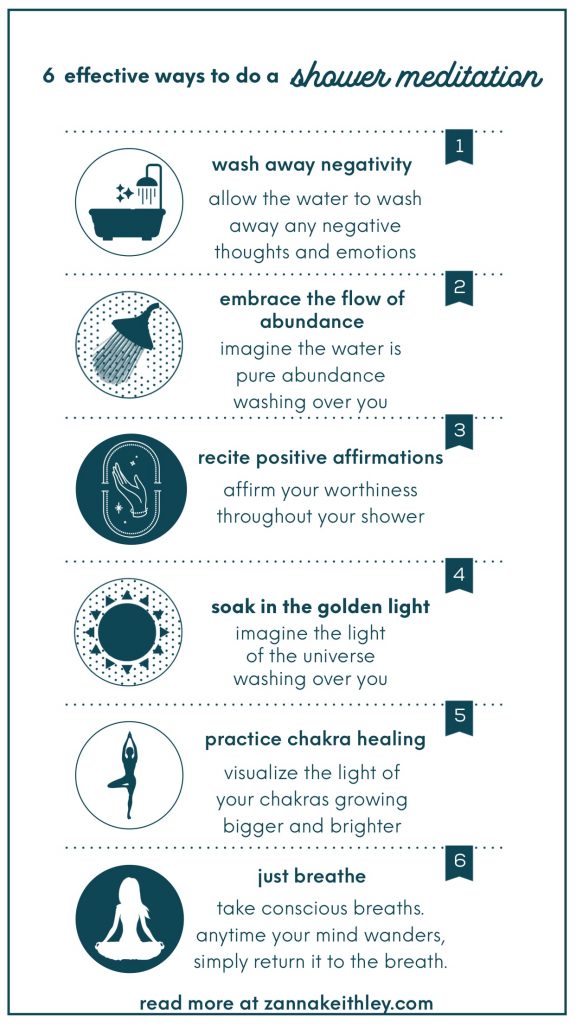
Pin this! How to Do a Shower Meditation (6 Powerful Practices) 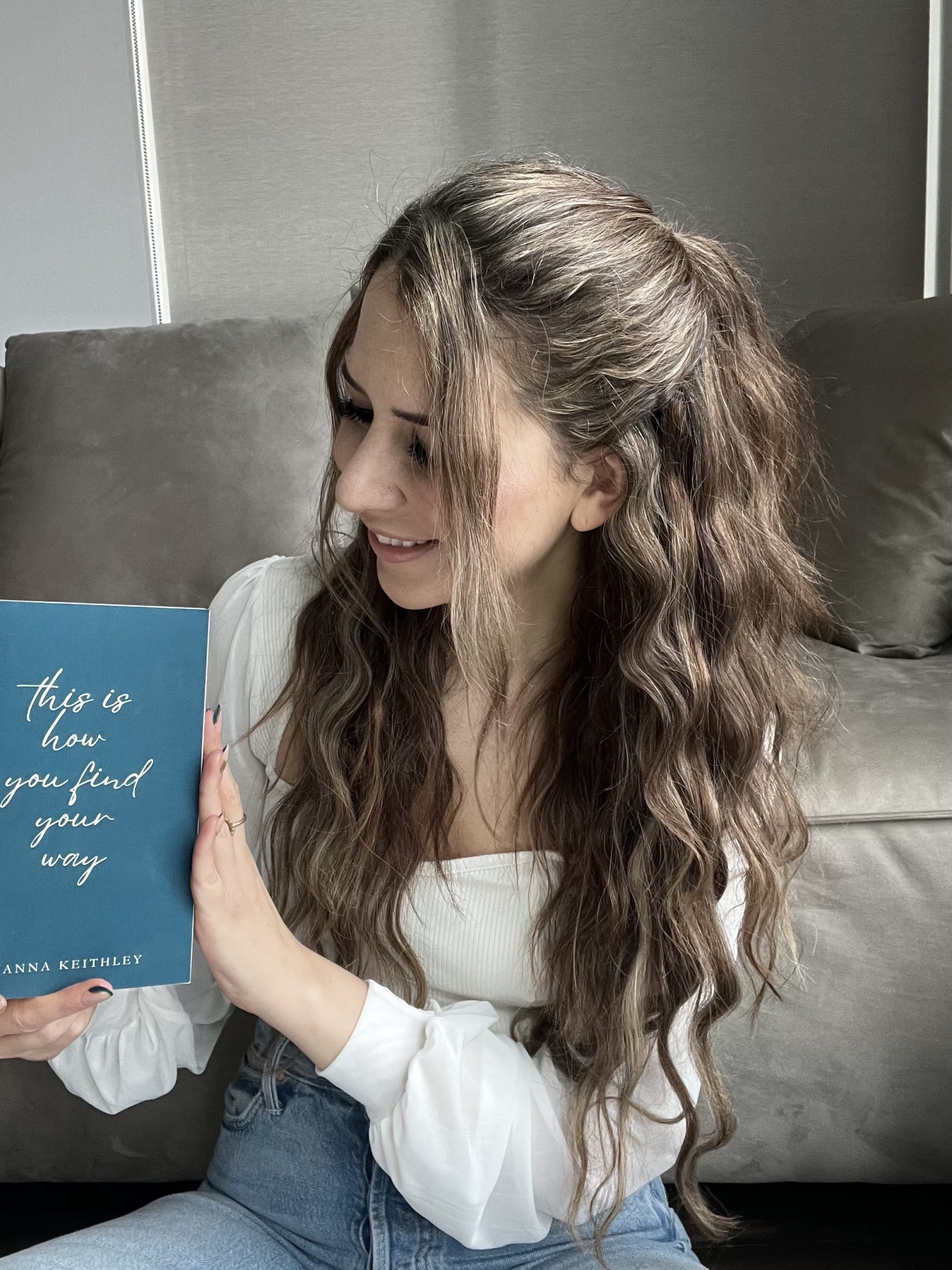
Zanna Keithley is an author, poet, and social media content creator who writes short prose dedicated to inspiring readers to follow their dreams, trust their intuition, and create beautiful and fulfilling lives. You can find her original writing on Instagram @zannakeithley.
-
How to Start a Meditation Journal (With Links)
A meditation journal is a powerful tool to cultivate mindfulness, get in touch with your inner self, and track your meditations. Discover how to start your own meditation journal today, plus get links and recommendations to some of my favorite meditation and mindfulness journals. And don’t forget to scroll to the bottom of this post for your free meditation journal printable template!
Disclaimer: This post contains affiliate links. If you purchase a product using my link, I may receive a small commission at no extra cost to you. As an Amazon associate, I earn from qualifying purchases. You can read my full disclosure policy here.
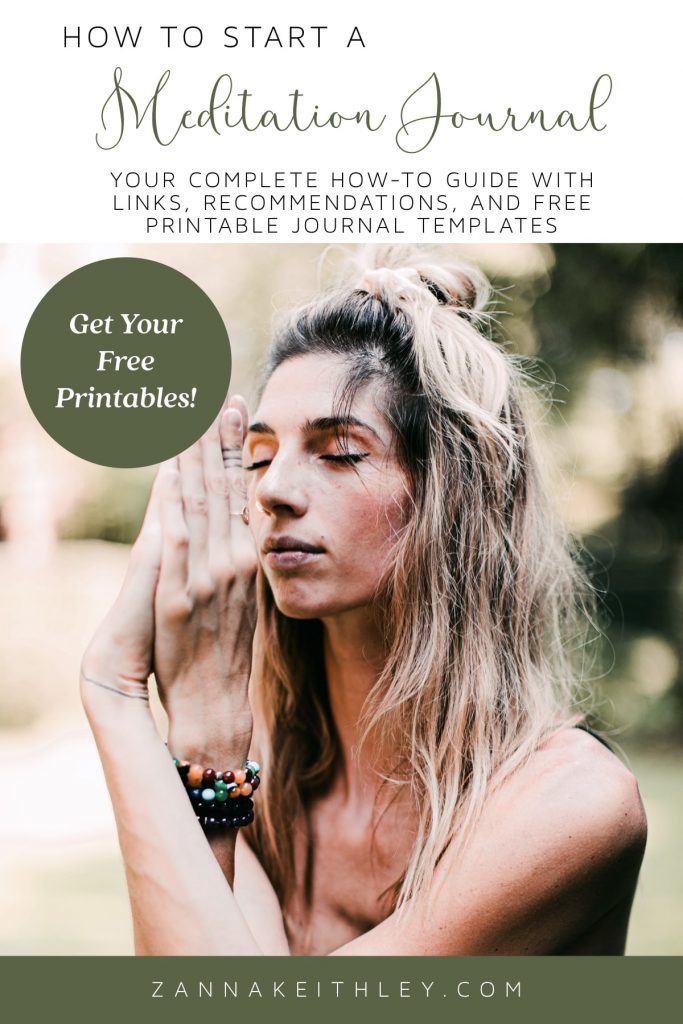
Pin this! How to Start a Meditation Journal (With Links) What is a Meditation Journal?
The answer, unfortunately, isn’t as straightforward as you’d think.
You see, a meditation journal is essentially anything you want it to be.
I know.
Least helpful answer ever.
But hear me out.
Depending on your personal goals and needs, a meditation journal can be any of the following:
- If you have an established meditation practice, or are looking to start one, then a meditation journal can be a way for you to reflect upon your daily practice. After each meditation, you can use your journal to write about what thoughts and sensations came up for you during your meditation. I’ll go into more detail on this below!
- You might view a meditation journal kind of like a mindfulness journal. This kind of journal can be a complement to a meditation practice, providing prompts that allow you to better understand your own mind and cultivate more mindfulness throughout your day.
- And you might also view a meditation journal simply as a way to record your meditations. You can write when you meditated, how long, and what kind of meditation you did.
In this post, I’m going to cover how to start a meditation journal from scratch. For the purpose of this blog post, I’m mostly going to cover the first bulletpoint above: creating a meditation journal that allows you to reflect upon your daily practice. This type of journal will require you to have some kind of notebook, whether it be a plain notebook, a hardcover journal, a notebook with inspirational quotes at the top of the pages, or something else that strikes your fancy. I’ve linked to some of my favorite lined journals and notebooks below!
However, if you don’t want to start from scratch, there are some awesome guided meditation journals out there. These journals give you everything you need to create a meditation journal today. Some allow you to reflect on your daily meditation practice while others help you to embrace mindfulness in your life, so choose what best fits your needs! I’ve also linked to some of these below, so you have plenty to choose from!
Now let’s get started on how you can create your own meditation journal today! P.S. Don’t forget to scroll to the bottom of the post to download your free printable meditation journal template!
How to Create a Meditation Journal
Getting Started
Before you begin creating your journal, it’s important to step back and gain clarity on your intentions. Here are a few questions to ask yourself:
- What do I want to get out of this meditation journal?
- How can this meditation journal support my growth?
- Do I want to track progress through time, or do I simply want a space to record my reflections? (Or both?)
- What do I need to ensure I continue to keep up with both my meditation and meditation journaling practice? How can I ensure I get what I need?
Now, let’s break down these questions a little deeper:
What do I want to get out of this meditation journal?
This question is meant to clarify your purpose or intention for creating a meditation journal. Do you want to have a space to record and reflect upon the images and emotions that arise during your meditations? Why? Will this allow you to become more aligned with your true self? Keep asking yourself “why” until you get to the root of your reason. If you’re having trouble, you might rephrase the question like this: “After six months of meditation journaling, where do I want to be? How do I see myself? How am I different?” If you see yourself being more peaceful, self-assured, confident, compassionate, and/or loving, that may be your why.
How can this meditation journal support my growth?
This question spins off the above question. Do you feel like you allow stress and anxiety to take up too much space in your life? Then maybe this meditation journal will support your growth by helping you to cultivate more inner peace and tranquility. Do you feel like your brain all too often replays events of the past or worries about the future? Then this meditation journal could be a way for you to cultivate more mindfulness. There’s no right or wrong answer here. The ways in which this journal can support your growth will be personal to your own journey.
Do I want to track progress through time, or do I simply want a space to record my reflections? (Or both?)
If you love data, then you might enjoy keeping track of different elements of your meditation. Here’s a few things you can track:
- Length of meditation
- Time of day
- Type of meditation
- Emotions before/emotions after
- Guided/unguided
Again, this one’s entirely up to you. If you want to track it, go for it! If not, skip it. Do what you feel best supports your needs.
What do I need to ensure I continue to keep up with both my meditation and meditation journaling practice? How can I ensure I get what I need?
Keeping a meditation practice and adding an element of journaling to it requires dedicated time and space. So how can you make sure you get the time and space you need? This question is meant to set you up for success. Let’s remove any barriers and obstacles in the way now so you can continue to have a successful meditation and journaling practice moving forward.
Related: How to Create a Meditation Table (A Complete Guide)
Unstructured vs. Structured Meditation Journal
In this section, I’m going to first outline how to create a free-flowing, stream-of-consciousness meditation journal. This is for those of you who thrive on finding your creative flow and don’t want anything too structured. Afterwards, I discuss how to set up your own structured meditation journal, for those who crave a little organized structure in their routine. There’s no right or wrong way to approach your meditation journal; it’s all just personal preference!
Unstructured Meditation Journal
This is quite possibly the simplest and most straightforward way to start a meditation journal as it doesn’t require a lot of pre-planning from you. In fact, if you have a notebook and a writing utensil, you can start writing today!
The goal here is to reflect upon your meditation, and if you choose, you can go a little deeper and explore the emotions, thoughts, and images that arose for you.
So what do you need to do? Keep your meditation journal and a writing utensil next to you during your meditation. Once you’re finished meditating, turn to the next blank page and begin writing. (If it isn’t convenient to keep your journal next to you, it’s okay to move to a more comfortable writing spot.)
Here are a few things you might write about in your journal:
- What emotions arose during your meditation?
- What images did you see?
- What thought patterns did you notice?
- What challenges did you encounter?
- Did anything unexpected arise for you?
- What benefits did this meditation offer?
- How did you feel immediately after? Five minutes after? Ten minutes after?
If you want to track specific details about your meditation, you can also write down time, place, and length of the meditation. You might also want to track details like whether it was guided or unguided and what particular type of meditation it was.
Another option is to make your journaling a type of continuation of your meditation. For instance, let’s say you did a meditation with affirmations for self-love. When you pull out your journal, you could write down the affirmations that resonated with you and continue to write more positive self-love affirmations.
Or maybe you did a visualization meditation and you want to keep the visualization going. You can write about all the images that came up and are continuing to arise for you. I like to do this in first-person, like everything in my visualization is happening right now. So if I’m walking in a beautiful meadow in my visualization, I’d write something like, “I’m walking in a gorgeous meadow with a sprawling sea of pinks and oranges and yellows spread out as far as my eyes can see.“
What I like about this method is that the possibilities are endless. I also like the flexibility. One day, you might want to reflect upon a particular image that came up for you during your meditation, and the next day, you might want to solely write about the thought patterns you noticed as you were meditating. This practice gives you the freedom and versatility to spend your time writing about anything you want.
Structured Meditation Journal
While the above method of keeping a meditation journal gives you the freedom and flexibility to write about anything, there’s actually something kind of calming about having an organized, structured element to your journaling practice.
And luckily, it’s super easy to create a structured meditation journal from a blank notebook!
To start, let’s look back at the questions you answered in the “Getting Started” section above. Did you note anything you wanted to track? How can this journal support your growth? What’s your why? You want to make sure all of these elements are incorporated into your journal in some capacity.
Now let’s set up the first page of your journal. I like to keep this pretty simple so that I can simply write in my headings the day of instead of creating a bunch of pages in advance. But if you want to get creative, go for it! I encourage you to do what makes your soul happy. If you want to add in some stickers, washi tape, or pretty illustrations, you can do absolutely anything. At the bottom of this post, I’ve linked to some fun items you can incorporate into your practice.
Here are some of the different elements you might want to incoporate into your journal:
- Date
- Time
- Length of Meditation
- Mood/Emotions Prior to Meditation
- Mood/Emotions After Meditation
- Type of Meditation
- What was your intention for this meditation?
- Reflection: How did your meditation go?
- What thought patterns did you notice come up during your meditation?
- What emotions did you feel during the meditation?
- What images arose for you during the meditation?
- What benefits did the meditation offer?
- Final Thoughts
Make sure you leave the bulk of your notebook space for the questions that will require longer answers. If you like to create your pages in advance, I’d encourage you to only make a few to start. You might find that you want to change some of the questions or leave more or less space for some of your answers.
For help getting started, be to scroll to the bottom of the post to download your free printable meditation journal template!
Monthly Reflections
This is optional, but I also like to include some space for a monthly reflection as I find it helps me to get re-centered when I check in with myself every once in a while. You can do this after meditating or choose a different time of day when you have some quiet time to reflect.
Here are some questions to ask yourself during a monthly reflection:
- Is my meditation practice supporting my highest good? Why or why not?
- Have any unexpected problems or issues arose in the past month?
- Is my meditation practice supporting my growth in the way I hoped? Why or why not?
- What internal changes have I experienced in the past month?
- Is there anything I want to change about my meditation practice?
- What profound lesson have I learned in the past month due to my meditation and journaling practice?
- Have there been any unexpected positive benefits?
- Is this practice worthwhile?
It’s important to check in with yourself to make sure that this practice is always supporting your highest good. If not, why? Do you feel like meditation has become something you “have” to do rather than “want” to do? Then maybe it’d be helpful to stop tracking your meditations and release the pressure to have a perfect meditation streak. Or maybe you’ve only been doing one type of meditation, and it’d be helpful for you to incorporate other types into your practice.
Whatever your answers are, hold love and compassion for yourself. None of us are perfect. Remember that each day is a beautiful opportunity to start anew.
Guided Meditation & Mindfulness Journals
Below, I’ve linked to some of the best meditation journals available today. Note that these are all a little different, so choose what works best for you. Some are designed to reflect upon your daily meditation practice, while others are geared toward helping you to cultivate more mindfulness in your life. And if you’re looking for blank journals, I’ve linked to some of my favorites in the next section!
Meditation: A Day and Night Reflection Journal
This beautiful Meditation: A Day and Night Reflection Journal is a unique meditation journal that allows you to both record and reflect. Record your mantra, intentions, and any aids (cushions, candles, music, etc.) you use in your meditation, and reflect on the benefits, inner dialogue, emotions, and thought patterns that came up for you during your meditation. Perfect for beginners and experienced meditators alike! Click here for current Amazon price.
Inner Peace: A Guided Meditation Journal for Beginners
Inner Peace: A Guided Meditation Journal for Beginners is a gorgeous meditation journal filled with easy-to-follow meditation prompts, powerful reflection questions, and inspiring quotes and mantras that will resonate at the very center of who you are. This is the perfect meditation journal for beginners to help you find your inner serenity and spread your inner peace into your outer world. Click here for current Amazon price.
A Year of Zen: A 52-Week Guided Journal
This one’s an absolute game-changer. The first time I discovered A Year of Zen: A 52-Week Guided Journal, I was blown away. This journal contains 52 weeks of journal prompts, designed to bring your attention to seven areas: meditation, liturgy, work, body, study, art, and the world. The powerful reflection questions in this journal are unlike any I’ve found in any other, encouraging you to explore the metaphors of your life, embrace your creativity (some of the prompts include drawing), and bringing more mindfulness into your daily life. Click here for current Amazon price.
The 5-Minute Mindfulness Journal
The 5-Minute Mindfulness Journal is a perfect complement to your meditation practice as it’s filled with thought-provoking journal prompts designed to help you embrace mindfulness while cultivating deep inner peace. It’s filled with quick yet profound prompts that will help you better understand your thoughts, and as a bonus, there are inspiring mindfulness quotes throughout the journal. Click here for current Amazon price.
Mindfulness & Meditation Guided Journal
This Mindfulness & Meditation Guided Journal is specifically designed for beginners and is the perfect companion to anyone just starting their meditation practice. It lovingly guides you through 30 days of lessons, teaching you both the basics of meditation as well as how to use meditation to build a deeper relationship with yourself. Each lesson comes with a journal prompt that will solidify the lesson and help you to apply what you’ve learned to your daily life. Click here for current Amazon price.
Present, Not Perfect
Present, Not Perfect is another mindfulness journal that acts as a complement to your meditation practice. The subtitle says all you need to know about this one: A Journal for Slowing Down, Letting Go, and Loving Who You Are. This gorgeous journal is filled with inspirational quotes, beautiful designs, and incredible prompts that encourage you to pay attention to your inner and outer worlds, embrace mindfulness, and love yourself fully. Click here for current Amazon price.
A Mindfulness for Beginners Journal
A Mindfulness for Beginners Journal is another perfect complement to your meditation practice and the ultimate guide for beginners. It’s filled with simple exercises (like focusing on your breathing), powerful prompts, and inspirational quotes and affirmations. If you want to learn more about how mindfulness can benefit your life, and how you can cultivate more mindfulness during your day, this is the perfect journal for you. Click here for current Amazon price.
Download your free printable meditation journal template here!
For more mindfulness tips and self-care ideas, plus lots of gentle nudges and loving words, be sure to follow me on Pinterest and Instagram!
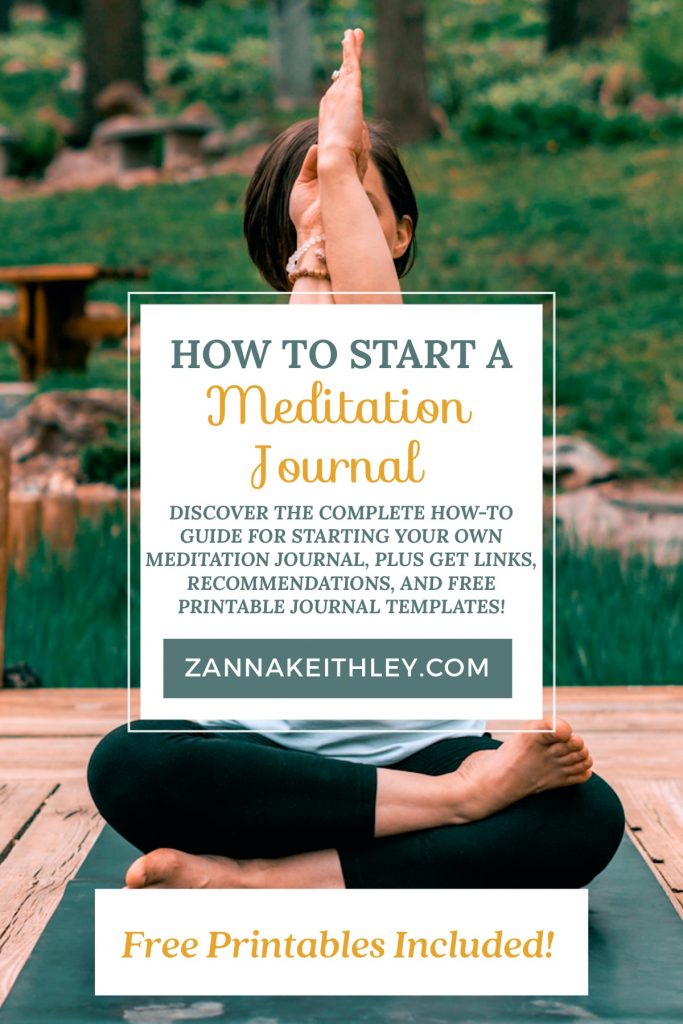
Pin this! How to Start a Meditation Journal (With Links) 
Zanna Keithley is an author, poet, and social media content creator who writes short prose dedicated to inspiring readers to follow their dreams, trust their intuition, and create beautiful and fulfilling lives. You can find her original writing on Instagram @zannakeithley.
-
10 Ways to Cultivate Mindfulness Today
As a follow-up to my blog post, What is Mindfulness? Plus 15 Powerful Mindfulness Quotes, I’m giving you 10 effective ways to cultivate mindfulness as you become more conscious of your thoughts and start living in the present moment. The best part? Most of these are simple practices you can start doing at home today.
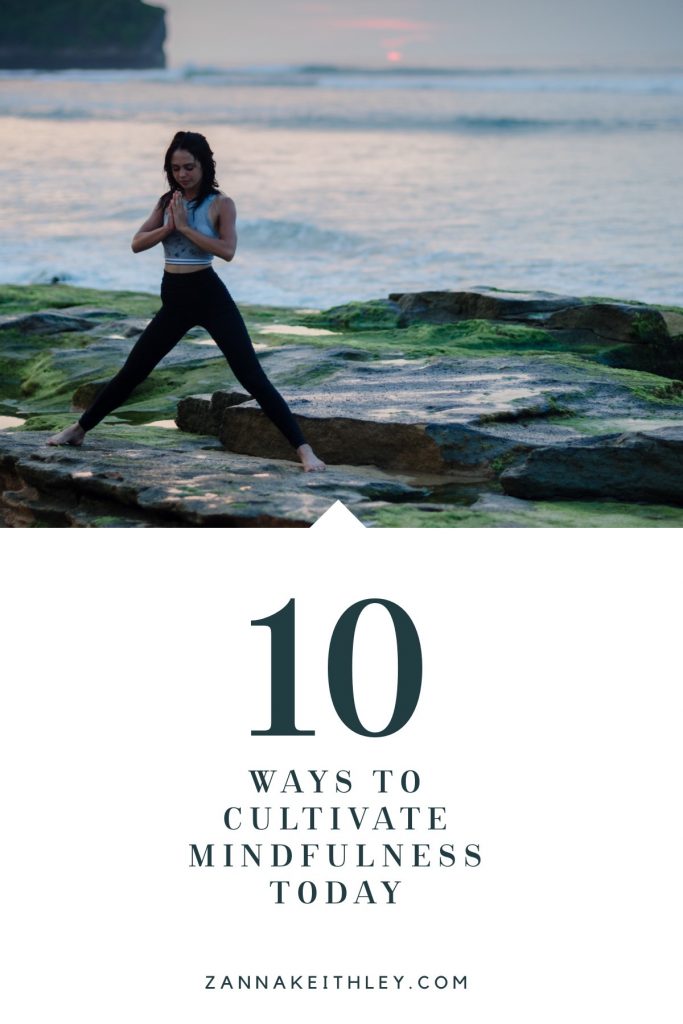
10 Ways to Cultivate Mindfulness Today What is Mindfulness?
In my recent blog post, What is Mindfulness? Plus 15 Powerful Mindfulness Quotes, I gave you my definition of mindfulness, the three components of mindfulness, and a list of powerful quotes from prominent thought leaders on the practice of mindfulness.
To recap, I define mindfulness as non-judgmental, conscious awareness in the present moment.
One of my favorite definitions comes from Jon Kabat-Zinn, the creator of the Stress Reduction Clinic and the Center for Mindfulness in Medicine, Health Care, and Society at the University of Massachusetts Medical School:
“Mindfulness is awareness that arises through paying attention, on purpose, in the present moment, non-judgmentally.”
When we think about mindfulness, it’s likely that the next word that comes to mind is meditation. And while I think meditation has been my most powerful tool in helping me to cultivate mindfulness, you absolutely do not have to meditate in order to live a mindful life.
In fact, anyone can begin a mindfulness practice today, no meditation required. And while you may feel like you’re too busy to start a new mindfulness practice, many of the methods on this list take almost no time at all – just a couple seconds of your conscious thoughts in the present moment.
Below, I’ve written about 10 ways to cultivate mindfulness today. While you definitely don’t have to do all the items on this list, I encourage you to try out as many as possible to see what works for you. To help you out, I listed these in order of practices that take the least amount of time to ones that take the most.
And if you have any questions, don’t forget to post them in the comments below!
Method #1: Phone Notifications/Reminders
The irony isn’t lost on me here. While most of us would say that a little less time on our phones is one of the best ways to cultivate mindfulness, I’m starting out by telling you to spend more time on your phone.
But let me backtrack.
I’m not actually saying to spend more time on your phone; I just think that instead of always focusing on the bad things associated with cell phones, we should focus our attention on the good services they provide.
And one of my favorite ways to use our cell phones for good is to set up positive and uplifting notification reminders that pop up during the day to remind you that you’re doing a great job, that you’re worthy, that you’re capable of doing incredible things – whatever you know you’ll need to hear when you’re in the middle of a chaotic workday.
So how can we use these notifications as a way to cultivate mindfulness?
By setting up reminders to pause in the middle of our day and breathe. These don’t have to be anything dramatic. One of my favorite gentle reminders?
“Breathe.”
Some other reminders you can set up to help you cultivate mindfulness:
- Pause. Breathe. Be.
- Notice your surroundings.
- Pause and look around you. Then, look within.
- Inhale. Exhale.
- Where is your mind right now?
- Where are your thoughts right now?
- Come back to this present moment. Don’t judge. Just be.
At most, these notifications may take a minute or two to set up, but once you have them stored in your phone, you can set them to pop up for you as many times as you want during your day.
Method #2: Post-It Notes
Essentially, post-it notes work in the same way as reminders on your phone, but if you don’t like to look at your phone during the day, this might be a less intrusive method for you. (Or, if you don’t want to choose, do both!)
You can use some of the same reminders I wrote above on your post-its. (Or index cards, scrap pieces of paper, napkins . . . anything you want to write on.) Then, place them in spots you know you’ll see them during the day.
Some suggestions for placement:
- Near your work station
- On your bathroom mirror
- In your wallet
- Near your phone charging station
- Next to the coffee pot
- In your pocket
- Next to the car radio or drink holders
The most important thing with the post-it method is not to get so used to them being there that you ignore them. Set the intention to read the post-its when you see them. Switching out the message weekly and/or using bright colors might help with this.
Method #3: Set Daily Intentions
One way to cultivate mindfulness is to set the intention to practice mindfulness throughout the day. I’m big on having a morning routine (more on that below!), but if you don’t have time for a longer routine, spend just one to two minutes every morning setting a purposeful intention.
Now, this intention doesn’t have to just be, “I will practice mindfulness today.“
To mix it up, you can focus on some of the different components of mindfulness each day.
Here are some examples of daily mindfulness intentions:
- Today, I set the intention to practice non-judgment.
- I will step back from my work once an hour to take three deep breaths.
- Today, I pledge to live in the present moment. When I find my mind wandering to the past or future, I’ll gently bring it back to right now.
- I will observe my internal world with objective awareness.
- I will observe my external world with objective awareness.
Again, the key here is to come back to your intention throughout the day. As you start this practice, phone reminders or post-it notes might benefit you. Or, if you have a whiteboard in or near your work space, you can simply write on it, “Remember your intention.” Let those words bring you back to the present moment.
Method #4: Follow Social Media Accounts that Teach, Discuss, and Encourage Mindfulness
Yes, I know.
Social media is just as bad as phones.
But again, I think we can use social media in this instance for good, not evil.
Do you have Instagram? Twitter? Facebook? Do you find yourself checking your social media once, twice, three times or more a day?
While social media detoxes are good for all of us every once in a while, we don’t have to cancel all of our accounts in order to practice mindfulness.
There are a lot of really amazing people on social media talking about mindfulness every day. These people are using their platform to teach and share their knowledge and experiences.
So let’s let them teach us.
We often open our social media apps on autopilot, not thinking twice about what we’re doing, so a powerful practice is to be mindful every time we open up one of our social media accounts. Notice (with objective awareness . . . no judgment) when you’re clicking that little square on your phone. Are you bored? Sad? Avoiding bad or negative feelings? Again, don’t judge yourself here. Just notice.
Then, when you have that account open, add accounts to your feed that talk about mindfulness. This doesn’t mean you have to unfollow your friends or favorite celebrities. Just find a few accounts that speak to you (you can search the hashtag #mindfulness and go through some of the popular pins to get started), and follow them. Every time you open your app, make sure you read through their images and captions.*
I know this one might sound silly or stupid to some, but I think there’s power in seeing examples, thoughts, ideas, and definitions about mindfulness every day.
My Mini-Disclaimer
*To be clear, I very much believe in listening to what other people have to say about a subject and then forming your own opinions and truth. If you follow a mindfulness blogger who says something that doesn’t feel right to you, question it. You don’t have to blindly accept anything that anybody (including me) tells you, especially if it doesn’t feel right.
Method #5: Breathing Exercises
Not sure if you want to start a meditation practice? Or you already do meditate, but you want to enhance your practice? Breathing exercises are a perfect tool to increase mindfulness, and the best part is you can do them anytime and anywhere.
While there are many variations of breathing exercises, your practice can be simple and straightforward.
For example, breathing from your belly, inhale for four seconds. Hold your breath at the top for another four seconds. Then exhale for four seconds. If you’re comfortable, you can try a variation of this, where you inhale for four seconds, hold your breath at the top for seven seconds, then exhale for eight seconds. You can breathe through your nose or mouth, whatever is most comfortable for you.
Even if all you can do is take a couple seconds for a few slow, conscious inhales and exhales, that’s okay.
The key to using breathing exercises to cultivate mindfulness is to focus on your breathing, grounding yourself in this present moment. And when we are continually able to return to the present moment, we allow mindfulness into our experience.
Method #6: Lean Into Frustrating Moments
This one is tough, but if you stick with it, it can be the most worthwhile.
It’s likely that nearly every day, you encounter experiences that cause you to feel annoyed, frustrated, and maybe even a little angry. Your heart rate increases. You feel a tightness in your chest. Or maybe it feels more like heat pulsating through your veins. Whatever it is, it’s uncomfortable and you don’t like it very much.
To cultivate mindfulness, don’t suppress or pretend these moments don’t exist.
Instead, lean in.
I’m not saying, “Let yourself get so angry and upset that the negative energy overcomes your entire body.”
What I’m saying is this: get curious.
To start, set an intention to recognize your moments of discomfort and/or frustration throughout the day. If you already know that your morning commute is going to make you want to smack your head against the steering wheel, decide to approach the commute a little differently today.
Now, you’re stuck in traffic. The cars aren’t moving. Or maybe someone cut you off. To be clear, you definitely don’t have to like these moments. Allow yourself to feel whatever emotions are rising within you.
And then, simply notice.
Now get curious. Ask yourself questions: Why am I frustrated right now? Why does this experience cause me to feel this way? What do I see in my surroundings right now? What would I change if I could?
Become an objective observe of yourself. That means no judgment. Just notice, probe, observe. Let yourself stay grounded in this present moment.
Now, see if you can do the same thing tomorrow. And the day after that. And then see if you might be able to have this same mindset when an unexpected frustration pops up during your day.
It won’t happen overnight, but if you do this consistently day after day, with time, you’ll see a shift in your mindset and how you view your present experience.
Method #7: Get Outdoors
I can’t quantify how much time this will take during your day. It may take seconds. Maybe minutes. Maybe an hour or more. But if you can make time for 15 minutes to go outside, you’ll experience huge benefits to your mindfulness.
Let’s say you have a 15-minute break during work, and you choose to step outside and take a walk during that time. Or maybe you decide to take a short walk outdoors after dinner. Whenever you can fit in this time, set the intention to stay in the present moment as you walk.
Now, as you’re walking, notice your surroundings. Take note of what you see and hear. How does the air feel on your skin? What sensations do you feel in your body? Is there tension in your muscles? Tightness in your chest? How do your feet feel in your shoes, walking against the ground?
Whatever your answers are, don’t judge. There is no right or wrong, no good or bad. And when you realize your mind has drifted away from the present moment, gently bring it back to right now.
The goal here isn’t to keep your mind from drifting.
The goal is to notice when your mind has strayed and to gently return it back to the present, over and over again.
If walking isn’t your thing, you can also perform this mindfulness exercise when gardening, mowing the lawn, or raking leaves. If the weather permits, you might also choose to do it while stretching outside.
And finally, whatever you decide to do, remember to breathe. Anytime your mind strays, remember that you can always return to the breath.
Method #8: Establish a Morning Routine
Depending on your available time, these last three practices can take anywhere from five minutes to an hour. (And you might also be able to combine them with other practices on this list.)
I’m a big proponent of having a morning routine that isn’t just about hurrying to rush out the door. Personally, I like to journal for 30 minutes first thing after I wake up. I do this when the house is quiet and it’s still dark outside. For me, this is my time to write, create, reflect, and uncover my own feelings, ideas, and thoughts. I also usually work out in the morning, either by running, HIIT exercises, yoga, or light stretching on recovery days.
So how exactly does any of this cultivate mindfulness?
A couple ways.
For one, you might choose to add specific mindfulness practices to your morning routine. You might choose mindful journaling, which entails writing about your thoughts, surroundings, and present experience with objective awareness. You can also add other practices on this list, like daily intention setting and breathwork.
I believe there’s also something powerful about having an intentional and conscious morning routine, no matter what it entails. It means that instead of just unconsciously going through the motions, you’re choosing how you greet the day. And when you start the day by consciously choosing your experiences, you’re more likely to continue this practice throughout the day.
Morning Routine Template
Below is the morning routine template I created for my post, How to Design a Morning Routine for Manifestation. If you don’t have time for journaling, utilizing a template such as this one is a powerful way to set your intentions for the day.
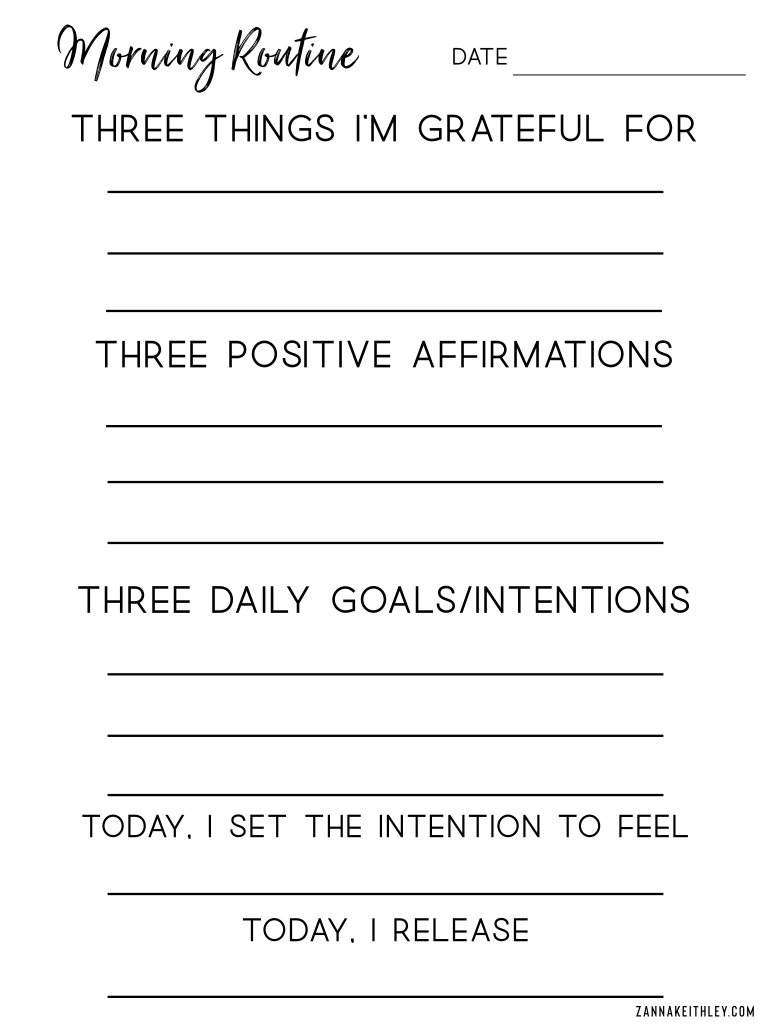
Morning Routine Template Possible Components of Your Morning Routine
- Journaling
- Meditation
- Yoga
- Intention Setting
- Daily Affirmations
- Breathwork
- Reading
- Exercise
- Morning Walk
- Gratitude Practice
Method #9: Meditation
If you’re looking to start a mindfulness practice, it’s hard to find anything that will serve you better than meditation.
First, let’s dig into some myths about meditation.
Meditation is not “clearing your mind of all thoughts.”
And “not thinking” is not the goal of meditation.
Rather, in meditation – mindfulness meditation, specifically – one simply breathes in the present moment, notices when they have a thought with objective awareness, and gently releases it, returning to the present moment.
For instance, imagine you’re laying on the ground looking up at a perfectly blue sky, and a cloud passes above you. “Look, there’s a cloud,” you think. Then it floats out of your vision, and you let it go without attachment.
These clouds are your thoughts. Notice. Release. Come back to the present, over and over again.
If you’ve never meditated before, starting a meditation practice may seem overwhelming at first. To help, I’ve created 7 Meditation Practices for Beginners, which gives you suggestions for how to start as well as links to guided meditations using the Insight Timer app. (No affiliation.)
Just know that even if someone on a podcast says they meditate for two hours a day, or an Instagram influencer swears by meditating for twenty minutes twice a day, you don’t have to start big. When I started meditating, I pledged just ten minutes a day. Sometimes, five. And even now, I often meditate for no more than ten to fifteen minutes.
You can definitely cultivate mindfulness without meditation. The walking exercise I described in the “Get Outdoors” section is a great way to start. But I believe meditation has been my greatest teacher in cultivating mindfulness. If you’re open to it, pledge to meditate for ten minutes a day, ten days in a row. Start small, then see how you feel after that.
Method #10: Yoga
Yoga is another powerful practice that may take ten minutes, an hour, or somewhere in-between. If you’ve never tried yoga before, this one might be even more intimidating than meditation. So let’s make it a little less intimidating by talking about why yoga cultivates mindfulness and how to gently step into a new yoga practice.
First, like we did with meditation, let’s debunk a myth about yoga:
Yoga isn’t about getting into a pose and holding it as long as possible until you can no longer stand the pain.
The beauty of yoga (in my experience, at least) is in the flow: the gentle awareness of the energy flowing through my body. Yoga is when my mind and body become one, and I simply exist in this present moment. The greatest lesson I’ve learned from yoga isn’t to become more flexible; it’s to become one with my breath.
Yoga cultivates mindfulness because it allows us to be in this present moment, at one with our breath, simply noticing the sensations and feelings in our body with non-judgmental awareness.
If starting a yoga practice seems intimidating, YouTube might become your new best friend. There are thousands of videos online dedicated to beginner’s yoga. If you’re not sure where to start, I highly recommend Yoga With Adriene’s Foundations of Yoga series. This series is comprised of 45 separate five to twenty-five minute videos, each dedicated to helping you explore a different yoga pose. I love these because you can take your time with each pose and go at your own pace.
If you want to learn a little more about yoga and mindfulness, here and here are a couple articles that dive a little deeper into the connection between your body and your mind.
And there you have it: ten ways to cultivate mindfulness today. Remember that you don’t have to include all ten practices into your life today. Start small. Choose a few that feel right to you. And if one of those methods doesn’t click, choose again. And remember that every moment in our lives provides us with an opportunity to practice mindfulness. Even right now. Notice the thoughts, sounds, sensations, and feeling of the present moment. No judgments. Just observe.
Other Posts You Might Like
- 10 Science-Backed Health Benefits of Meditation
- A Beginner’s Guide to Understanding and Unblocking Your Chakras
- 25 Epic Morning Affirmations to Create a Beautiful Day

10 Ways to Cultivate Mindfulness Today 
Zanna Keithley is an author, poet, and social media content creator who writes short prose dedicated to inspiring readers to follow their dreams, trust their intuition, and create beautiful and fulfilling lives. You can find her original writing on Instagram @zannakeithley.
-
What is Mindfulness? Plus 15 Powerful Quotes
In this post, I’ll go in-depth on the three components of mindfulness, plus provide you with 15 life-changing quotes about mindfulness that will change the way you think. Be sure to check up my follow-up post, 10 Ways to Cultivate Mindfulness Today, where I provide you with ten simple and effective practices you can do today to cultivate a more mindful life.
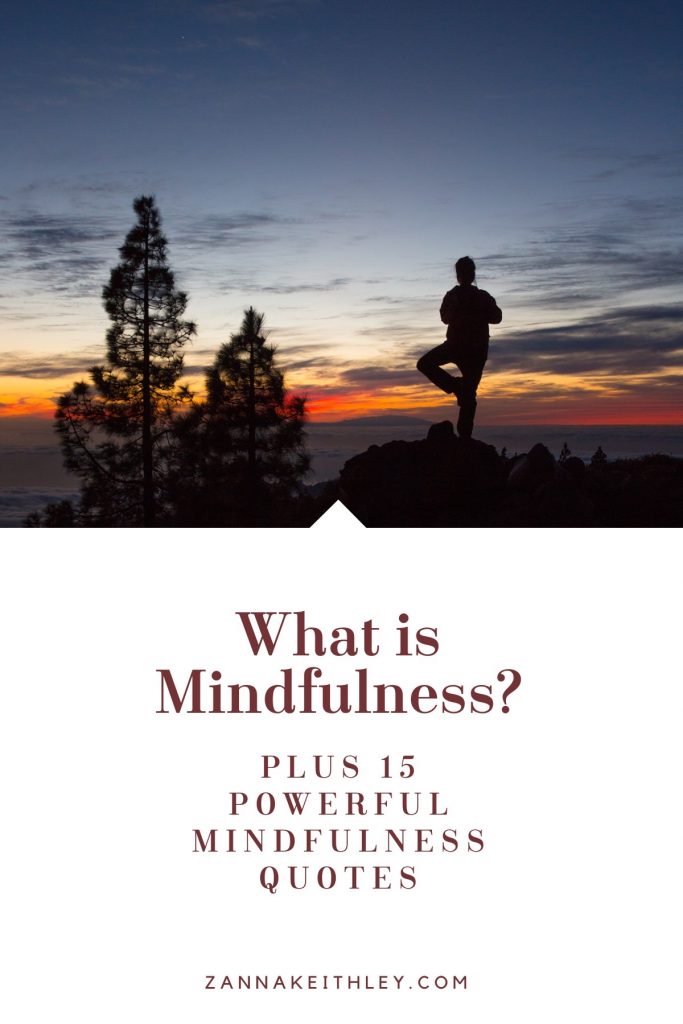
What is Mindfulness? Plus 15 Powerful Quotes Mindfulness
This word has been gaining recognition and popularity over the past several years (for good reason), becoming more than just a concept reserved only for experienced meditators and skillful yogis. From mindfulness coaches to mindfulness bloggers (*raises hand*), we see reminders to be mindful all over social media, blogs, and news sites.
But what exactly does this mean?
I’ll be the first to admit that when I first heard the term mindfulness, I had no idea what it was actually referring to. From what I knew of the word mindful, I had some guesses: it probably had something to do with awareness and maybe having respect for yourself and others, such as to be mindful of your words or to stay mindful of somebody’s personal space. That didn’t seem too difficult. From that fuzzy and uncertain definition, I was pretty sure I already had a solid foundation in mindfulness already built up for myself.
Spoiler alert: I was wrong.
I’m not sure I ever actually sought out an actual definition of mindfulness. Rather, the practice found me, and as I opened myself up and made space for it in my life, more resources and guidance came to me to help me in my journey.
While meditation has been my greatest teacher in helping me discover mindfulness, you absolutely do not have to meditate to cultivate mindfulness. We begin cultivating mindfulness the moment we return our awareness to this present moment (and when our minds inevitably stray, gently bringing it back to the now, over and over again).
In this post, I’ll break down what mindfulness really means, including its three core components, as well as give you fifteen powerful quotes from past and present thinkers and visionaries on what mindfulness is, what it does, and why it’s important.
What Is Mindfulness?
This morning, as I was applying my makeup, I noticed that I chose the exact same eyeshadow from my eyeshadow palette that I’ve been unconsciously choosing for probably a week straight. I pointed my brush right at the little rectangle and dipped it into the neutral, beige-ish powder without even thinking about it, probably just as I had yesterday and the day before. Today, though, I paused for a second. Then I looked at the other colors on the palette. I recognized what I was doing, made the conscious decision to keep using that same eyeshadow again, and then applied my eyeshadow.
As small and seemingly inconsequential as this moment was, this is an example of mindfulness.
We all have unconscious behaviors we engage in every single day. And that’s okay! We don’t need to fight or avoid these unconscious behaviors. To be honest, it’s kind of nice to go on autopilot every once in a while and perform actions that don’t take tons of thought.
Mindfulness is, in many ways, the art of noticing. In my example, choosing the same eyeshadow color I’ve been picking for the past week was an act of simply noticing. I was able to pause in the middle of my unconscious act and simply observe myself.
Going Beyond Just Noticing
Now, if we deepen our definition of mindfulness, we see it as a little more than just noticing: it’s non-judgmental awareness in the present moment.
Here are two reactions I could’ve had when I noticed that I picked the same eyeshadow color for the umpteenth time:
- “Good God, Zanna, what is wrong with you? You should’ve been paying better attention. You’re not mindful. You’re just going through the motions again!”
- “Huh. That’s interesting.”
Mindfulness does not mean you notice and then berate, bully, and judge yourself for your thoughts and actions.
Mindfulness means you notice and observe without any judgment.
(But if you realize that you are judging yourself, that’s okay. This is my absolutely favorite thing about mindfulness: we can stray as many times as we want and always come home to ourselves. So if I had chosen that first reaction above, I could’ve observed my own judgment and then thought, “Huh. Okay. I’m judging myself. That doesn’t align with who I am. I think I’ll choose again.” The important thing is not to let this become a domino effect. If you notice yourself judging, try not to judge yourself for judging. Instead, choose again. Choose differently. Be gentle with yourself. Just the act of recognizing and choosing again is going to be of far greater service to you in your journey than being a perfect mindfulness student all of the time.)
Defining Mindfulness
My favorite descriptor for our individual roles in a mindfulness practice is to be an objective observer. This means I have the power to step outside of myself in the present moment and notice my thoughts and actions without judgment or criticism. And when I see that my thoughts are returning to stories of the past or future, I can gently guide myself back to this moment right now. And I can do that again and again and again, as many times as I need.
So here’s my personal definition of mindfulness:
Mindfulness is non-judgmental, conscious awareness in the present moment.
And to be mindful is to be an objective observer of oneself.
And that’s it. Of course, we can continue to dive deeper as we explore and discuss mindfulness, but for a definition, it’s truly that simple.
The 3 Components of Mindfulness
So from my definition above, we can break down the concept of mindfulness into three components:
- Conscious Awareness: To recognize your thoughts, words, and actions as you’re thinking, speaking, and acting. This is the opposite of the “autopilot” mode we all fall into once in a while. Conscious awareness is taking a step back, recognizing the autopilot mode, and choosing how you think and feel in this moment.
- Lack of Judgment: Autopilot mode is normal. So is letting our minds wander to the past or future. So is anger, fear, sadness, pain, anxiety, worry, boredom, and all kinds of emotions that we label as good or bad. The key to mindfulness is to not judge ourselves for our thoughts and emotions. Simply notice. Observe. Choose again.
- Returning to the Present Moment: I think about the past a lot. I also think about the future a lot. And that’s okay. I can also recognize that the only real thing in the world is this moment right now. We can think about the past and future, but don’t live there. Live in this moment. That’s what mindfulness does for us; it allows us to honor and recognize the beauty, value, and importance of this moment right now.
15 Powerful Quotes
“Mindfulness is simply being aware of what is happening right now without wishing it were different; enjoying the pleasant without holding on when it changes (which it will); being with the unpleasant without fearing it will always be this way (which it won’t).” – James Baraz
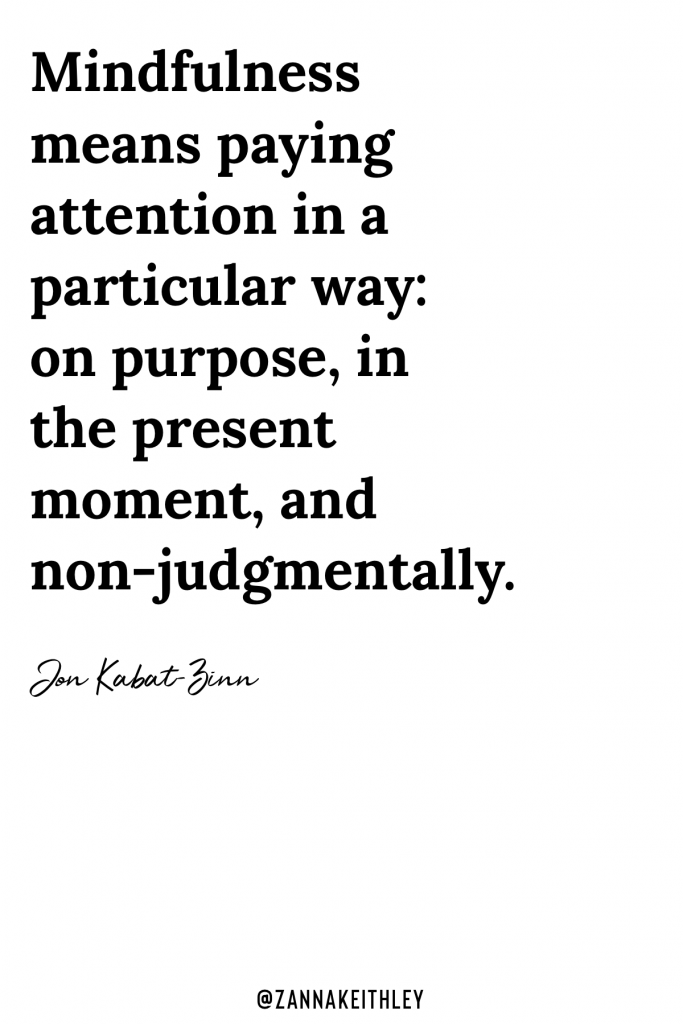
Jon Kabat-Zinn Mindfulness Quote “What would if be like if I could accept life – accept this moment- exactly as it is?” – Tara Brach
“That’s life: starting over, one breath at a time.” – Sharon Salzberg
“If you want to conquer the anxiety of life, live in the moment, live in the breath.” – Amit Ray
“Wherever you are, be there totally.” – Eckhart Tolle
“Feelings come and go like clouds in a windy sky. Conscious breathing is my anchor.” – Thích Nhất Hạnh
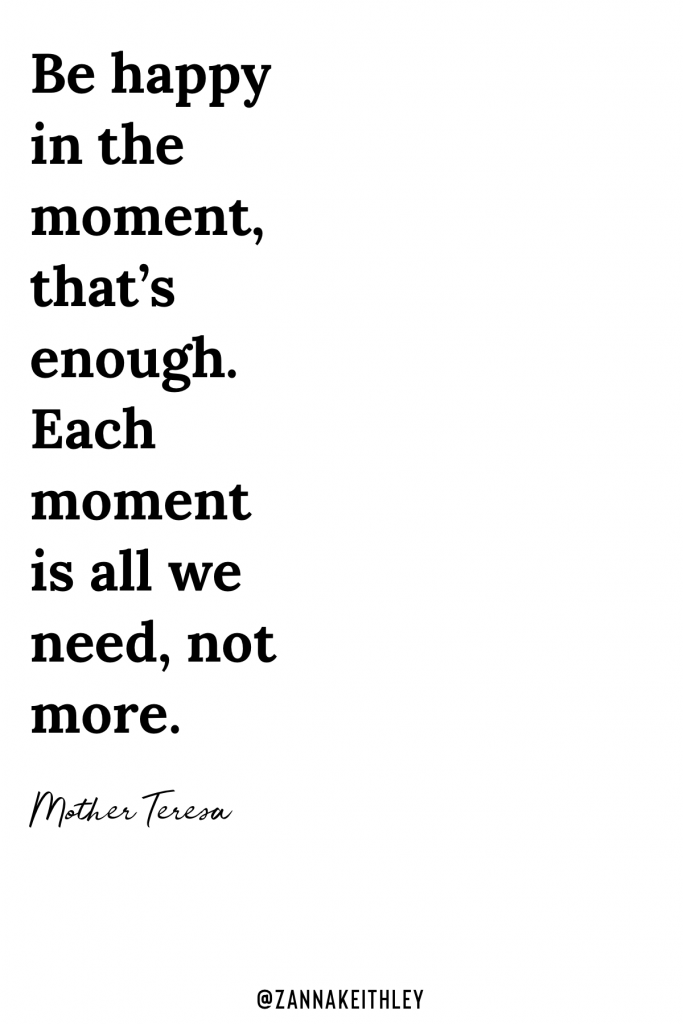
Mother Teresa Mindfulness Quote “Mindfulness is the aware, balanced acceptance of the present experience. It isn’t more complicated than that. It is opening to or receiving the present moment, pleasant or unpleasant, just as it is, without either clinging to it or rejecting it.” – Sylvia Boorstein
“Pure awareness transcends thinking. It allows you to step outside the chattering negative self-talk and your reactive impulses and emotions. It allows you to look at the world once again with open eyes. And when you do so, a sense of wonder and quiet contentment begins to reappear in your life.” – Mark Williams
“We spend a lot of time judging ourselves harshly for feelings that we had no role in summoning. The only thing you can control is how you handle it.” – Dan Harris
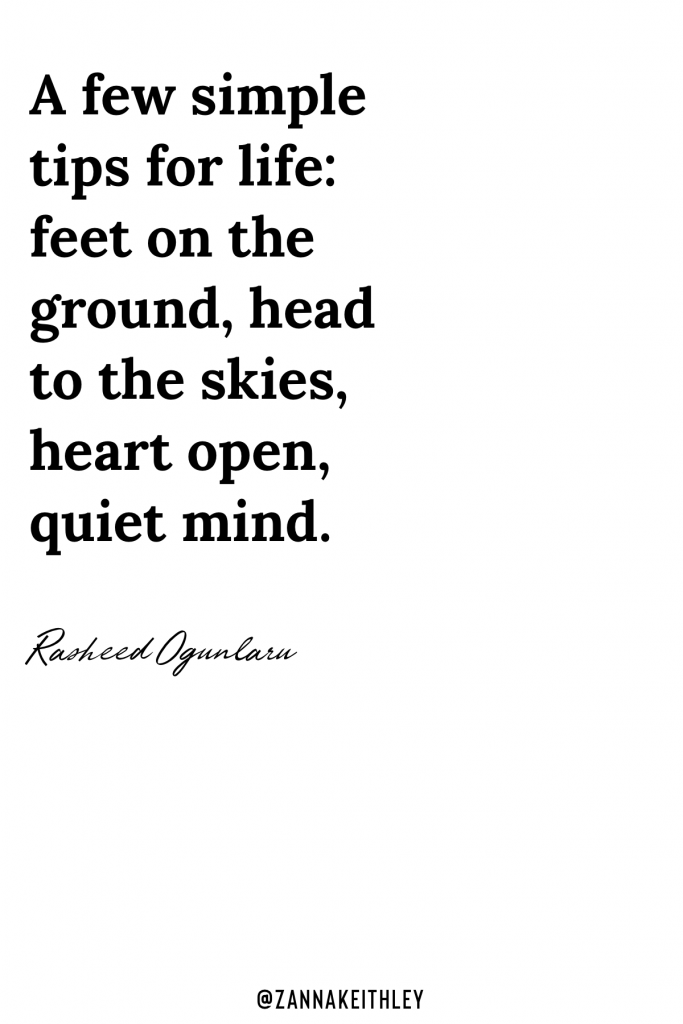
Rasheed Ogunlaru Mindfulness Quote “Whatever state I am in, I see it as a state of mind to be accepted as it is.” – Nisargadatta Maharaj
“Learn to slow down. Get lost intentionally. Observe how you judge both yourself and those around you.” – Tim Ferriss
“Don’t believe everything you think. Thoughts are just that – thoughts.”- Allan Lokos
Want to Learn More About Mindfulness?
Check out these awesome resources!
- mindful.org
- UMass Memorial Health Care Center for Mindfulness
- Awakening Joy
- Short animated video by Happify: Why Mindfulness is a Superpower
If you’re thinking about starting a meditation routine but aren’t sure where to begin, be sure to check out my post, 7 Types of Meditation Practices for Beginners. And if you have any questions about mindfulness or meditation, leave a comment below or connect on social media! I’d love to hear from you!

What is Mindfulness? Plus 15 Powerful Mindfulness Quotes 
Zanna Keithley is an author, poet, and social media content creator who writes short prose dedicated to inspiring readers to follow their dreams, trust their intuition, and create beautiful and fulfilling lives. You can find her original writing on Instagram @zannakeithley.
